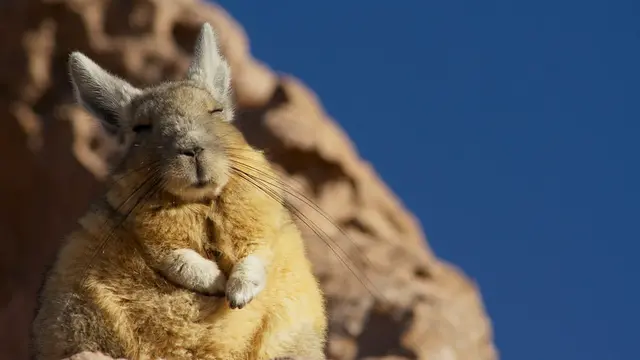When the BBC programme Planet Earth came out a decade ago, it transformed how viewers saw their planet. The first natural history series to be filmed in high definition, it captivated a global audience of more than half a billion people by giving them an unprecedented view of life on Earth.
There may be as few as 3,500 snow leopards left in the wild. Hemis National Park, Indian Himalayas. Photo:BBC
Now 10 years on, series producer Tom Hugh Jones and producers Justin Anderson and Elizabeth White talk about some of the highlights of making Planet Earth II, including filming snow leopards in Ladakh and capturing the amazing endeavour of chinstrap penguins on the remote island of Zavodovski.
Viscacha bask in the warming rays of the early morning sun. High altitude salt pan in the Andes, Bolivia. Photo: BBC
Narrated by Sir David Attenborough, Planet Earth II is at 20:00 on Sunday, 6 November on BBC One.
Grizzly newborn cubs emerge in spring and the mothers lead them down to the valleys in search of food. Kananaskis National Park, Canada. Photo:BBC
Check the link to watch the documentary and some more tales!
http://www.bbc.co.uk/programmes/p02544td
A chain of salt lakes at over 4,000 metres altitude provide a safe refuge for flamingo colonies. The Andes. Photo:BBC
Palmato geckos have webbed-feet so that they can more easily move across the surface of the sand. Namib Desert in Namibia. Photo: BBC
(BBC)
 简体中文
简体中文

